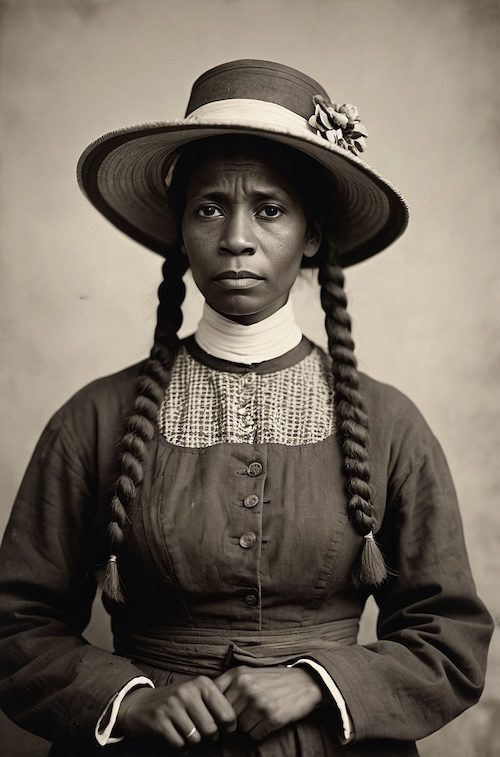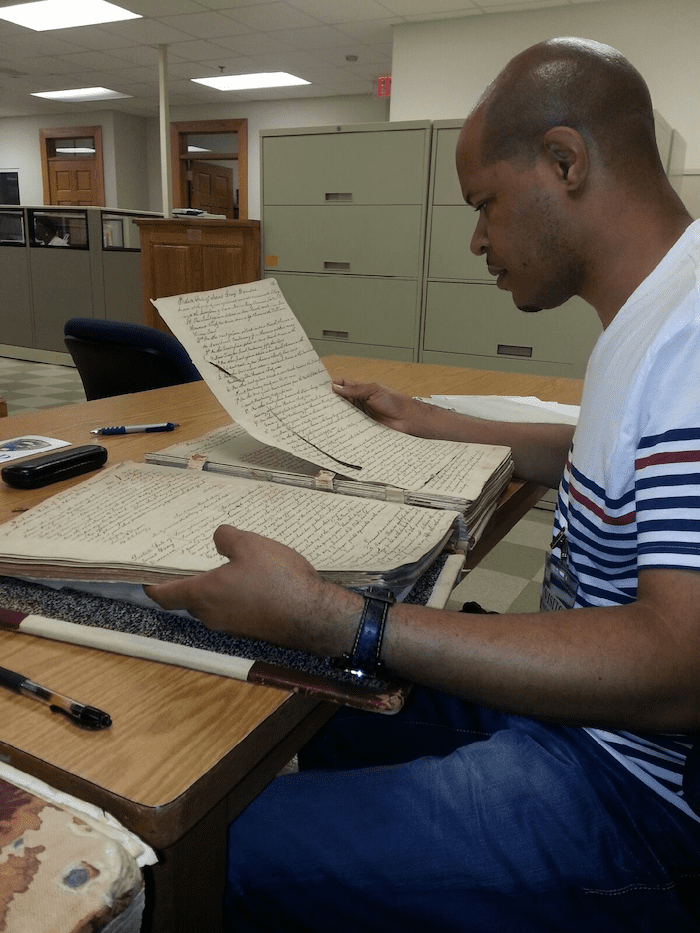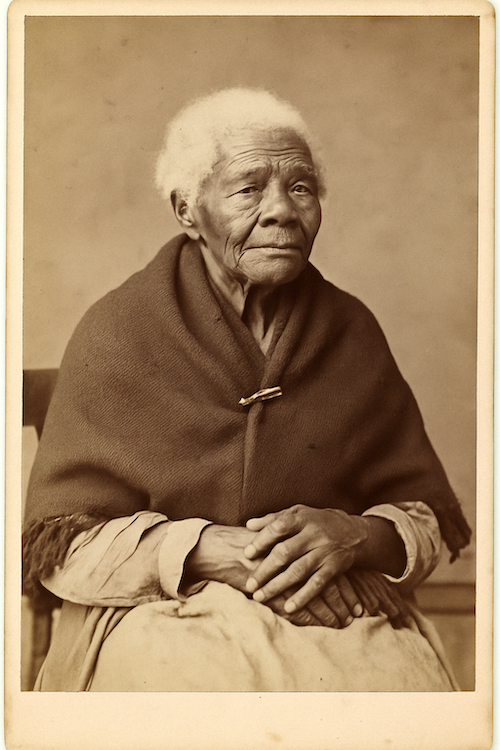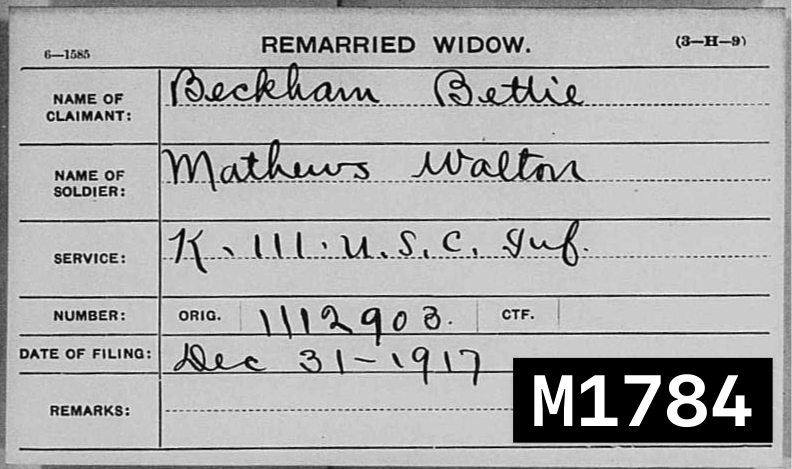



Widow’s Pension
A military widow’s pension refers to a financial benefit paid by the U.S. government to the surviving widow of a deceased military veteran. The specifics of these pensions have changed over time and depend on the war in which the veteran served, the legislation in effect, and whether the veteran or widow met certain qualifications. A widow’s application for a military pension was governed by the pension laws in effect at the time of her filing. The process required the following conditions to be met:
Widows of the Civil War
with Michael A. Willis

Contact Michael A. Willis

- ➡️ Proof of Marriage: The widow had to provide valid documentation or testimony establishing that a lawful marriage to the veteran had occurred.
- ➡️ Marital Status: She must not have remarried after the veteran’s death.
- ➡️ If Remarried: A widow who had remarried could only become eligible again if all subsequent husbands were deceased and if the law at the time permitted reinstatement.
- ➡️ Means Test (c. 1890s): Beginning in the 1890s, widows were also subject to a means test. Pension benefits could be denied if the widow owned property or assets of significant value, reflecting that she was not in financial need.
Use Caution When Searching M1784 & M1785 Indexes
Key Differences Exist Between Platforms
Be aware that searching pension records for remarried widows requires different strategies depending on the platform you are using. Each database has distinct search parameters and limitations:
FamilySearch (Free Database): Researchers can search by either the name of the veteran or the widow’s new married name. However, searches using her maiden name or her name from the first marriage (to the veteran) will not yield results.
Ancestry.com (Subscription-Based): This platform is designed to locate records under the widow’s new married name. Searching directly by the veteran’s name in the primary field will return no results. To locate a file using the veteran’s name, his name must be entered in the “Spouse” field of the search interface.
National Archives (Free Online Access – M1785 Only): The National Archives provides online access to the index for widows whose husbands served during the Civil War and later (NARA Microfilm Publication M1785). However, it does not include pension applications for service prior to the Civil War (such as those found in M1784). Additionally, these records are not keyword-searchable; they must be browsed manually by selecting the appropriate alphabetical range corresponding to the widow’s new married name.
M1784 and M1785 – Remarried Widows Pension Index
Index to Pension Application Files of Remarried Widows Based on Service in the Civil War and Later Wars and in the Regular Army after the Civil War, ca. 1861–1934. This index documents widows who remarried after the death of a Civil War or later service veteran and subsequently applied (or reapplied) for pension benefits due to their first husband’s military service.
When a widow of a Civil War soldier remarried, she typically lost her pension benefits. However, changes in law later permitted these widows to reapply and reclaim pensions under certain conditions (especially widows who were again widowed or divorced).
The second index, which includes widows of veterans from the Civil War and subsequent conflicts, is designated as M1785.

M1784 Example: 1812 - 1860

M1785 Example: 1861 - 1934

M1784 – Remarried Widows of Veterans of Service from 1812–1860

M1784 is an index to pension application files for widows who remarried after the death of a veteran who served in U.S. military conflicts from 1812 through 1860. These records reflect a later pension application submitted after the widow’s second marriage ended, either through death or divorce, making her eligible again for pension benefits under revised laws. M1784 covers veterans who served in:
- ➡️ War of 1812: 1812–1815
- ➡️ Indian Wars: 1817–1858
- ➡️ Mexican War: 1846–1848
- ➡️ Peacetime Service: 1812–1860 (Veterans of Regular Army or Navy with no specific wartime engagement but eligible for pensions under certain acts.)
- ➡️ Other military actions prior to the Civil War
- ➡️ Index coverage: Includes women who applied to renew or continue their pensions after remarriage.
Orig. Number (Original Application Number)
- ➡️ Assigned when the widow submitted a pension application
CTF Number (Certificate Number)
- ➡️ Assigned only if the pension was approved and a certificate for payment was issued.
- ➡️ This number means the government validated the claim and granted pension benefits.
If the CTF is missing, it means:
- ➡️ The application was rejected (due to insufficient proof, ineligibility, or a legal disqualification).
- ➡️ The file was abandoned or incomplete.
- ➡️ A decision may have been pending at the time of indexing.
- ➡️ OR, in rare cases, the approval may have come later, and the index was never updated.
M1785 – Remarried Widows of Civil War and Later Wars

What the 1901 Act Did:
Before this act, remarriage disqualified widows from continuing to receive pension benefits for their deceased veteran husbands. The 1901 Act changed that by allowing certain remarried widows to resume receiving their pension under specific conditions.
M1785 is a card index to pension applications filed by widows who remarried after the death of a Civil War (or later war) veteran. Under 19th-century pension laws, a widow forfeited her pension when she remarried. However, several later acts of Congress reinstated pensions in certain cases, most commonly after the death of the second husband or divorce. M1785 covers veterans who served in:
M1785 covers veterans who served in:
- ➡️ Civil War (Union only): 1861–1865
- ➡️ Indian Wars: 1866–1891 (esp. Plains Wars)
- ➡️ Spanish-American War: 1898
- ➡️ Philippine Insurrection: 1899–1902
- ➡️ China Relief Expedition (Boxer Rebellion): 1900–1901
- ➡️ Pancho Villa Expedition / Mexican Border Service: 1916–1917
- ➡️ WWI: 1917–1918
